Jessica Noviello • Apr 05, 2016
LPSC 2016: Icy Satellite Science
Icy satellites are a hot topic in planetary science. In July 2015, NASA announced the selection of nine instruments to fly on the Europa Multiple Flyby Mission, which is projected to cost roughly $2 billion and launch in 2022. The mission will orbit Jupiter and fly past Europa 45 times, each time taking pictures of the surface and measurements of the environment as a whole. Astrobiologists (scientists who pursue the study of and search for extraterrestrial life) will be able to better determine if Europa is habitable. Geologists will use the planned near-global (95%) image coverage at better-than-50-meter-per-pixel resolution to search for evidence of possible tectonic activity on Europa’s surface, including potential plumes, and to characterize a possible landing site for a future mission. Geophysicists will learn more about the thickness of the ice shell, which will help in developing heat flux models of Europa’s interior. But Europa isn’t the only icy satellite in our solar system. This year’s Lunar and Planetary Science Conference (LPSC) in The Woodlands, TX devoted two oral presentation sessions to questions related to not only Europa, but the other icy bodies in the solar system as well, primarily Enceladus and Ganymede. Io, while definitely not an icy satellite, is often included in these sessions because of its wildly active volcanism and its location in the Jovian system. The study of Io also yields more data on the effects of tidal heating, the primary source of heat for the traditional icy satellites.
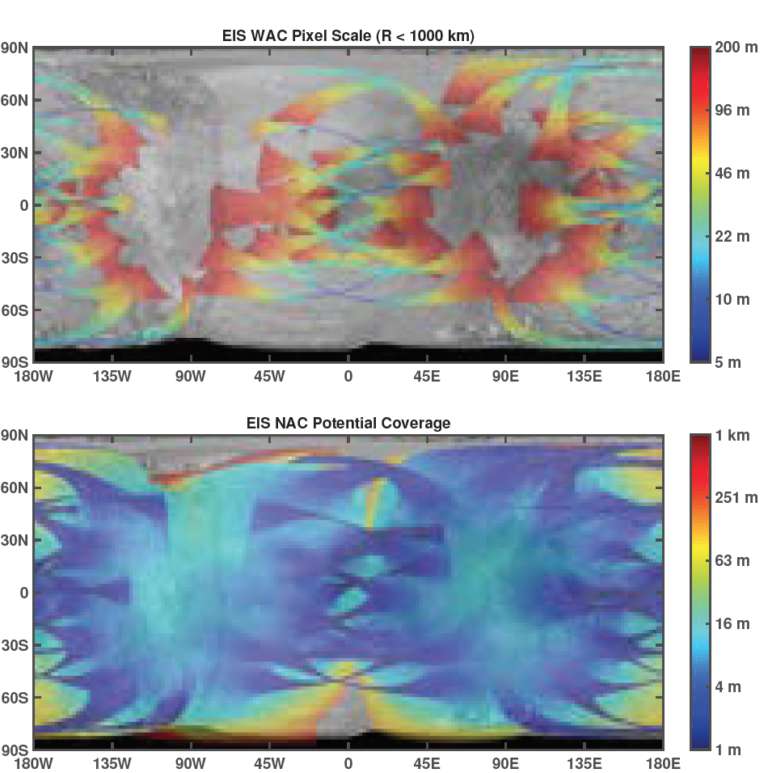
One major theme present in multiple talks spanning different icy worlds is plumes. Enceladus and Io have plumes, but Europa is comparatively quiet, save for one potential plume that was imaged by the Hubble Space Telescope. A new model presented by Danielle Wyrick showed that if plumes do exist on Europa, we should see a major enhancement in the exospheric densities of water and several organic species. These concentrations could be measured with the upcoming Europa mission, thus helping to answer the long-standing question of what the chemical composition of Europa’s ocean is.
Plumes on other icy satellites garnered attention at this year’s conference too. As one of the most active surfaces in the solar system, Enceladus has a claim to fame for cryovolcanism (ice and water volcanism). Ben Teolis presented new research on Enceladus’ plume structure using data taken by the Cassini Ultraviolet Imaging Spectrograph (UVIS) and Ion and Neutral Mass Spectrometer (INMS). Using data from multiple flybys, Teolis and his colleagues were able to determine a rough 3D structure of the gas plumes to test whether a single jet or a “curtain” of gas release was more likely. A jet would indicate a single break in the ice shell—similar to how the Hawaiian islands indicate “hot spot” volcanism—whereas a curtain would indicate some kind of extended break in Enceladus’ surface, which has implications for the tectonics of the ice shell. The team found that the jet model matches the observations better in most, but not all, cases, but what that means has yet to be determined.
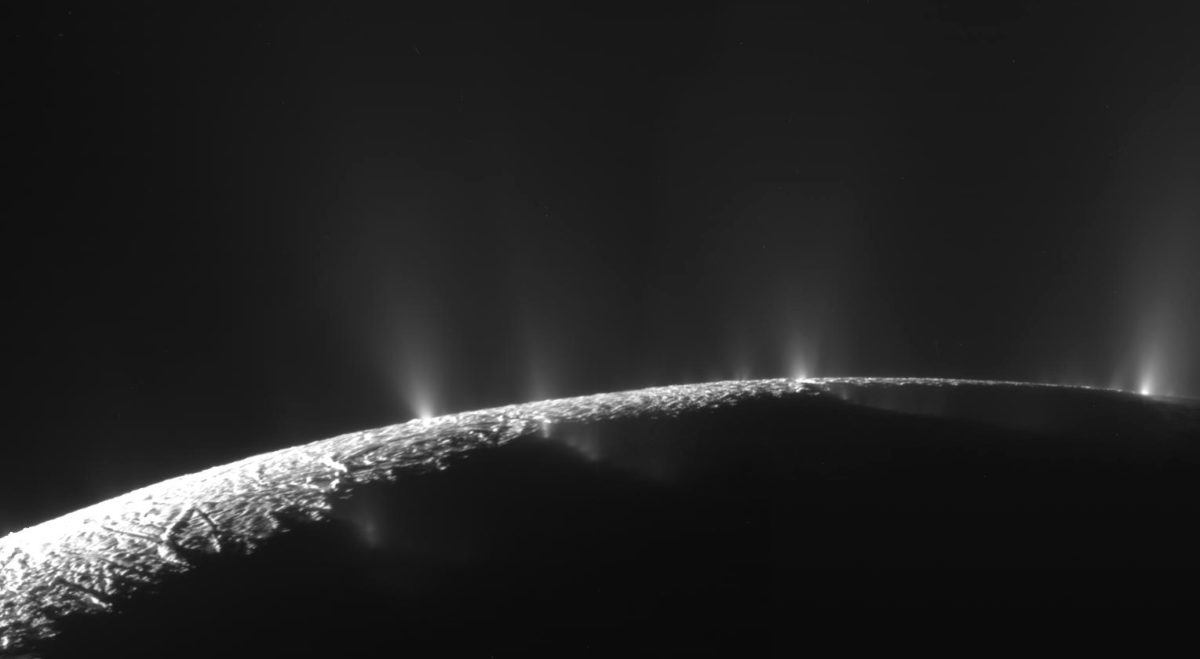
Another talk by Alex Patthoff examined the relative age dating of Enceladus’ surface to work out the timescales for intense geologic activity inferred from the presence of fractures and grooves. The team suggested that the cause of the extensions that formed these features was the freezing of the entire subsurface liquid ocean, and that the time between periods of geologic activity could be as long as 2 billion years. This echoes the talk by James Roberts, in which he argues that Enceladus’ ocean “wants to freeze,” and can do so in a timespan as short as short as 16 million years if certain assumptions about the heat flux are made. This is consistent with the observations that indicate Enceladus’ ice shell is not in thermal equilibrium at all, which opens up entirely new questions on why that is.
Cryovolcanism is important to study because the material ejected out from the plumes comes directly from within the planet and contains clues for what may lie beneath the icy exterior. But the ice shell itself holds mysteries too. Chaos is a feature unique to Europa, but the mechanics behind its formation are still unknown. All models agree it has something to do with melting, shifting, and refreezing at least the top layer of the ice shell, but how deep does that melting go? The models must also explain why chaos only occurs on Europa, as far as we have seen in space missions to date.
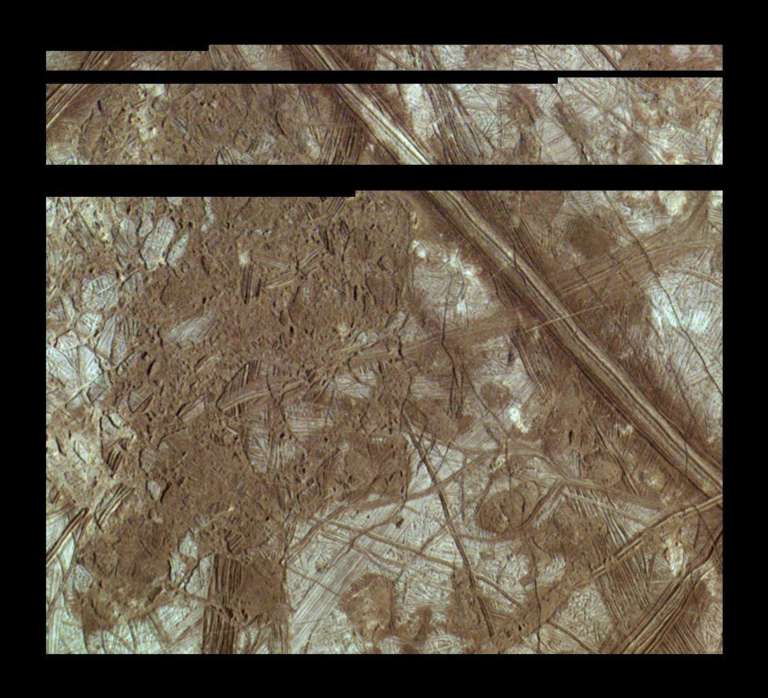
Finding more chaos on Europa’s surface could help constrain these models, but the present imaging of Europa is insufficient to find small features (under 100 square kilometers in area). My own research presented at LPSC used a test called the discriminant function analysis to try to find small chaos patches in low-resolution (coarser than 1.5 kilometer-per-pixel) images of Europa. I took information about the size, shape, and color of these features and qualitatively sorted them into groups based on standard geologic mapping practice for Europa: chaos, spots, pits, and domes. With the right combination of variables, the test quantitatively separated chaos out from other features roughly 90% of the time. This means that it may be possible to take the same kinds of measurements in low-resolution images and use them to find new chaos patches. The next step will be to use the same mapping technique in low-resolution images to find chaos patches. Their global distribution could tell us about the heat flux within Europa’s ice shell, and help locate where liquid water might exist at or near the surface.

Europa’s cycloids also received attention during LPSC. Cycloids are long, semicircular breaks in Europa’s ice shell, and are thought to form from the increase and subsequent decrease of stress throughout Europa’s orbit around Jupiter. A talk by Kyle Mohr mapped these cycloids and found that cycloids are not observed where the stress field models say they should be. This is interpreted as evidence that the ice shell has rotated independently of the rest of the moon—a process called non-synchronous rotation (NSR). You can see this effect for yourself if you are at a restaurant and spin your water glass around, keeping the base on the table. The water and ice inside the glass will move at a different speed from the glass itself. A second talk on cycloids given by Patthoff on behalf of Bob Pappalardo asserted that because cycloids are found in groups on Europa, they must have formed relatively quickly (several millions of years). The most fascinating thing from this talk, however, was the introduction of the SatStressGUI tool, which is able to take multiple stress models and add them together to model a planet’s surface. They showed that the NSR stress must be added to the obliquity and diurnal stresses in order to get the wavy and cycloidal lineaments seen on Europa. Personally speaking I had never heard of SatStress before LPSC, but now that I know about it I think it could help scientists make significant progress on understanding the stress fields of not only Europa, but of all icy bodies.

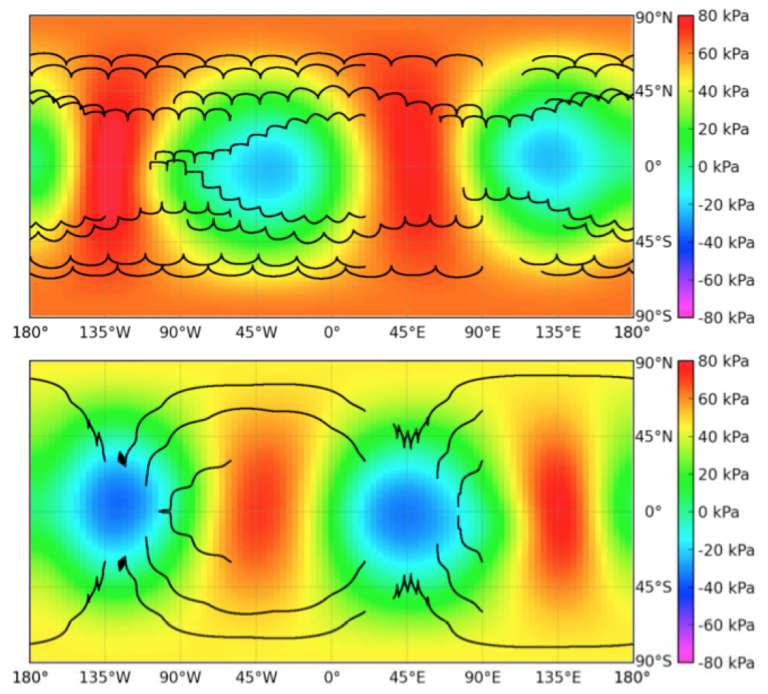
To finish up the whirlwind tour of icy satellites, Mike Bland talked about the effects of viscous relaxation on the surface morphology of Ganymede, another moon of Jupiter. Viscous relaxation refers to the slow rebound of a surface after a stress, like an impact from an asteroid or comet, has been applied. The craterforms (features that look like craters but may not be impact-related in origin) on Ganymede appear viscously relaxed already, so the challenge was to link them with other features. Ganymede’s surface has sulci (pronounced sulk-eye), undulating grooves that weave between themselves, but models were unable to replicate their formations. Bland showed that if a model assumes the initial terrain of Ganymede’s surface is viscously relaxed craterforms, increasing heat flux and cryovolcanism can lead to the formation of the sulci.
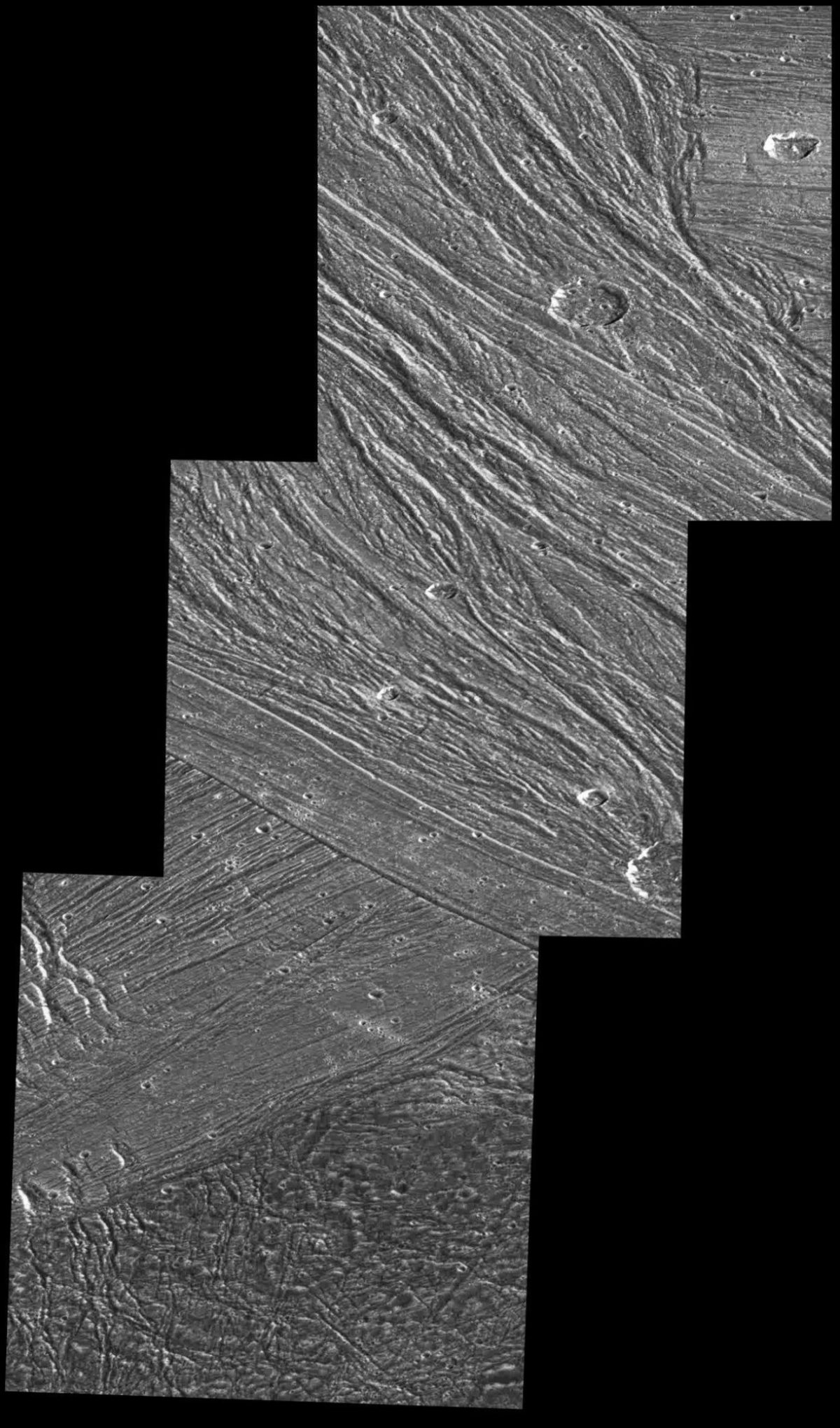
There were many interesting talks at LPSC and it was impossible to see them all, but the one thing that is absolutely clear is there are many more questions to answer. The upcoming Europa mission will answer a few of them, but will probably create many more, and that’s only for one icy world! Until then, we will have the time to prepare and discuss our new research at all the LPSCs to come.
Support our core enterprises
Your support powers our mission to explore worlds, find life, and defend Earth. You make all the difference when you make a gift. Give today!
Donate

 Explore Worlds
Explore Worlds Find Life
Find Life Defend Earth
Defend Earth

